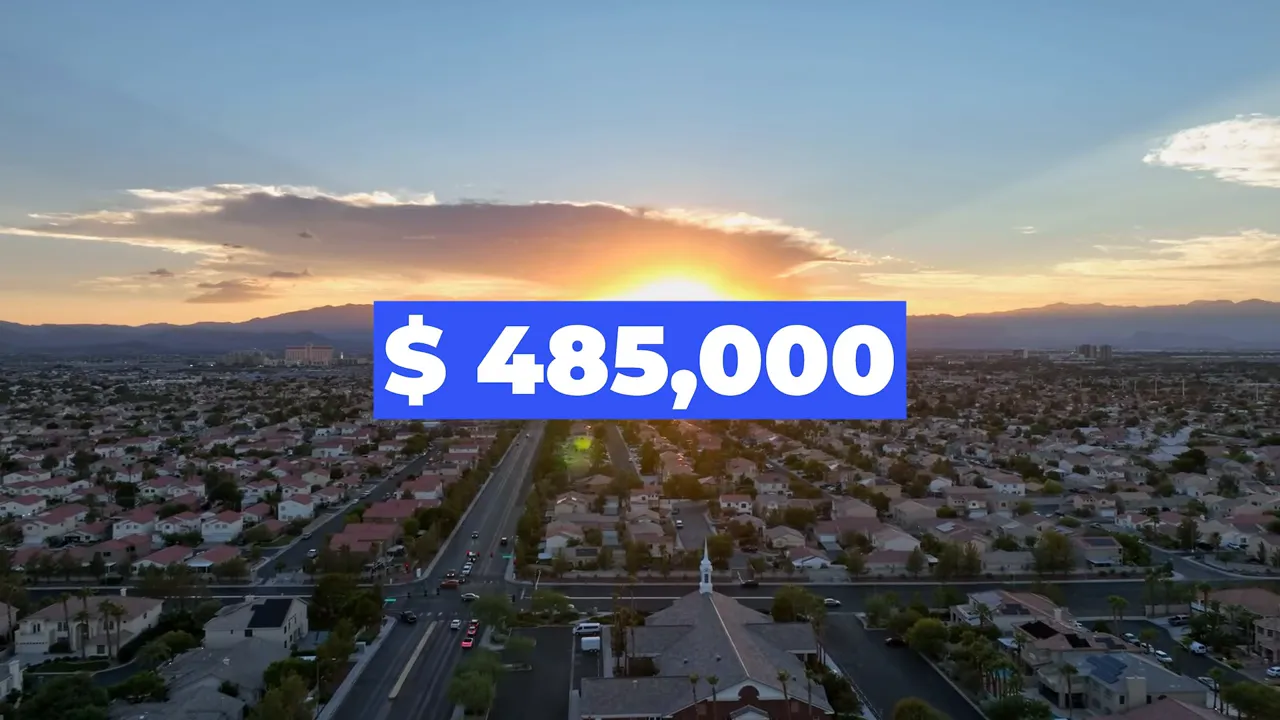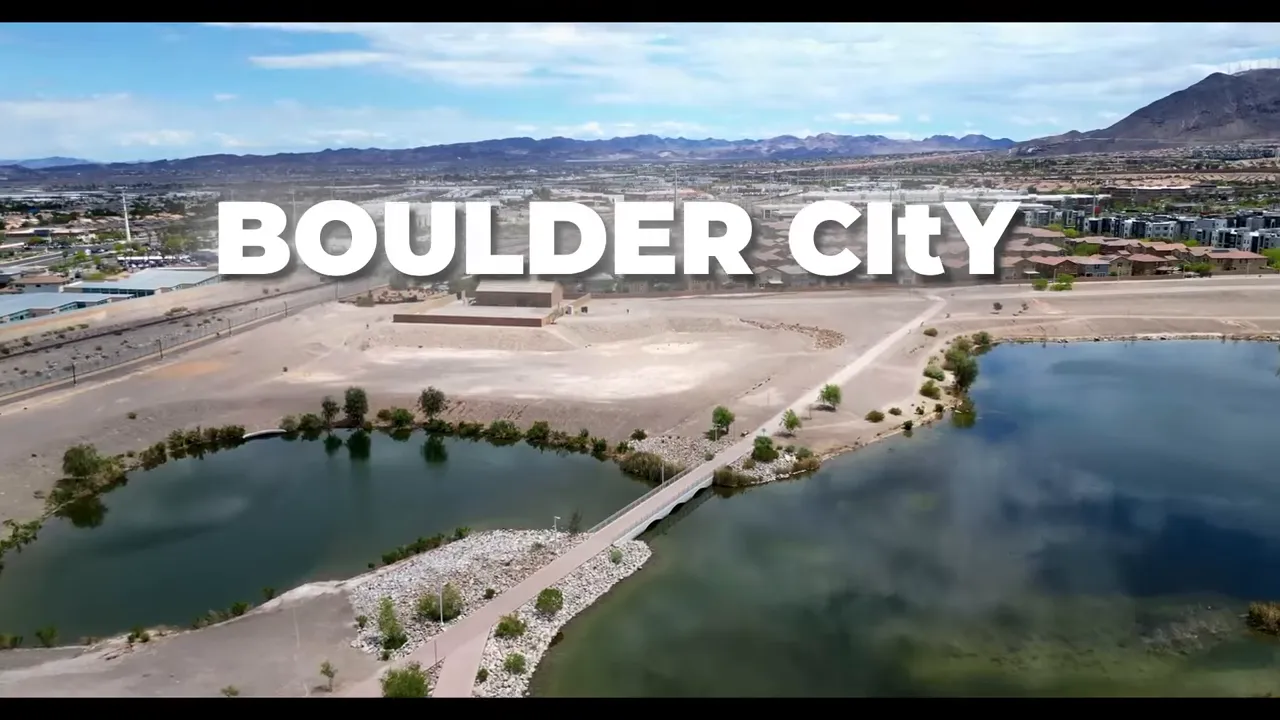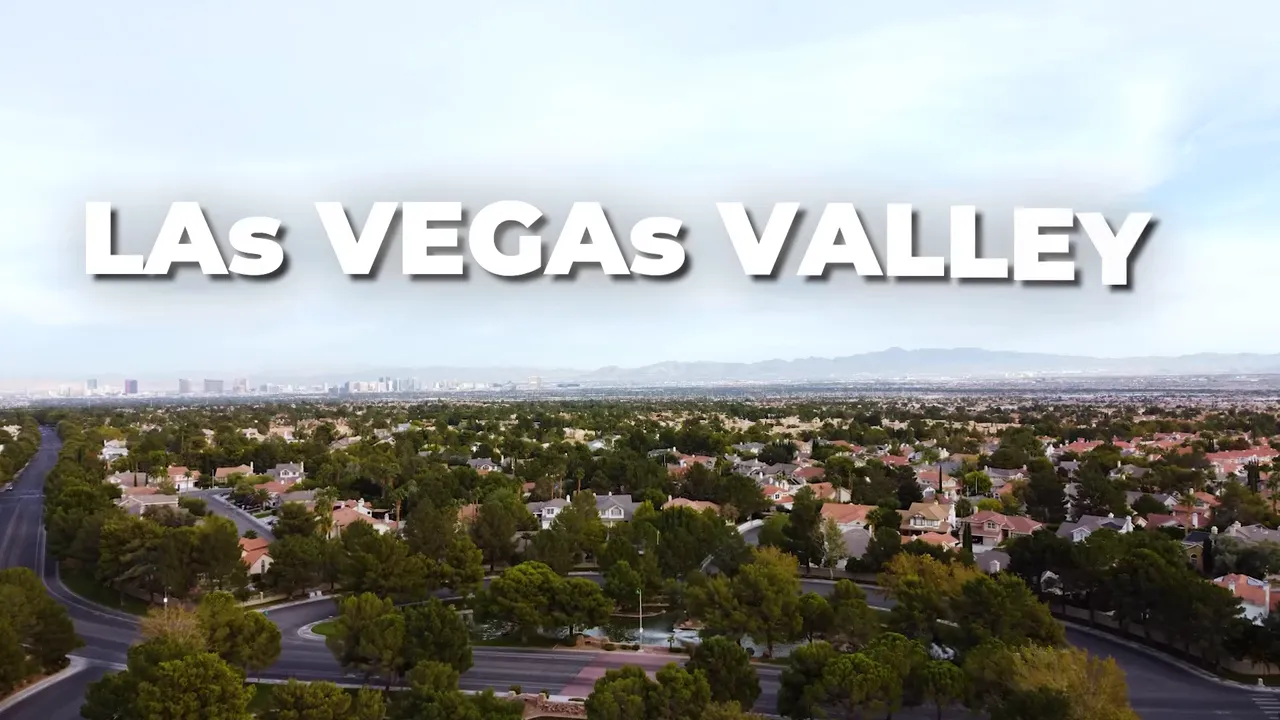Las Vegas Nevada Neighborhoods 2025 | How I Choose the RIGHT Community for Your New Home

Las Vegas Nevada Neighborhoods 2025 | How I Choose the RIGHT Community for Your New Home

Choosing the wrong Las Vegas neighborhood in 2025 could literally cost you tens of thousands of dollars over time. I know that sounds dramatic, but it happens all the time: buyers fall in love with a house and skip the neighborhood homework, then end up paying higher HOA fees, longer commutes, and dealing with unexpected noise or development. I want to make sure that doesn’t happen to you. Below I walk you through the market right now, the seven most important factors I use when evaluating neighborhoods, the neighborhoods I recommend for specific lifestyles, and a practical research checklist so you can confidently choose the right part of town.
📈 Where the Las Vegas Market Stands in 2025
I review the latest market data every quarter, and as of June 2025 the median single family home price in Las Vegas sits at about $485,000, which is roughly a 2.1 percent increase year over year. That alone doesn't tell the whole story. Homes sold are down about 7 percent compared to last year, but inventory has surged—almost a 70 percent increase in the number of homes available. Months of supply has jumped to around 3.6 months, up nearly 83 percent from last year.

Translation: we are moving toward a more balanced market and that gives buyers real negotiating power again. Sellers are starting to get realistic on price. You’ll see more willingness to offer incentives such as closing cost contributions—something that was rare a couple of years ago. My forecast for the near term is modest growth: around 3 percent for 2025 and another 3 to 4 percent in 2026. Mortgage rates are averaging in the mid 6 percent range right now, with potential modest improvement later in the year.
If you're buying, that environment matters because it gives you time to be selective about the neighborhood you pick rather than being forced into a bidding war. Neighborhood choice today affects your monthly costs, commute, lifestyle, and long-term resale value. So let’s get specific on what matters.
🧭 The Seven Factors I Use to Choose a Neighborhood
I always tell my clients to make a list before they fall in love with curb appeal. Here are the seven critical areas I evaluate and make sure you understand before you buy.
- Budget and total cost of living — Not just the purchase price. HOA fees, property taxes, utilities, and maintenance add up.
- Amenities — What do you need daily? Walkability, parks, pools, golf, trails, restaurants?
- School quality — Clark County School District quality varies dramatically by neighborhood.
- Safety — Crime stats matter, but so do street lighting, neighborhood upkeep, and security presence.
- Future development — Planned commercial projects, roads, and schools can change an area fast.
- Transportation and commute — Proximity to highways, average commute times, and public transit availability.
- Community culture — Do you want active association events or a low-key private feel?

Budget and Total Cost of Ownership
Budget is more than a number for the mortgage lender. I work with buyers to calculate the total monthly cost of ownership, including HOA dues, utilities (air conditioning in summer is real money), property taxes, and routine maintenance. For example, master-plan communities often have higher dues because they fund parks, pools, and gated security. Those amenities are great, but if HOA fees are triple what you expected, that can turn a “cheap” house into an expensive monthly commitment.
Amenities and Lifestyle Fit
Ask yourself what you’ll use every day. If you value walkability to coffee shops, then the Arts District or downtown make sense. If you want yard space, access to trails, and quiet mornings, neighborhoods near Red Rock like Summerland are a better fit. Don’t buy for what you might want someday—buy for how you plan to live now.
School Quality
I always tell parents: look at both ratings and the school itself. GreatSchools is a useful tool, but visit the campus, talk to other parents, and track school funding and new construction in the area. Summerland and many Henderson neighborhoods consistently score well in Clark County, which translates to steady demand from families.
Safety and Neighborhood Upkeep
Safety is more than the crime map—visit at night, check street lighting, look for neighborhood watch signs, and notice how well people maintain properties. Master plan communities often have private security and gated sections; that matters for some buyers and is less important for others.
Future Development
Always check city and county planning. A quiet block today could have a major shopping center planned nearby. That might be great for convenience or terrible if you preferred solitude. Commercial and infrastructure investment usually points to appreciation, but it can alter traffic patterns and noise levels.
Transportation and Commute
Commuting costs matter a lot. A house that’s $50,000 cheaper but adds an hour to your daily commute might cost you more in gas, wear and tear, and stress. Las Vegas is expanding public transit but it is still a car-centric city for many neighborhoods. Map your route during rush hour before you commit.
Community Culture
Some buyers want active HOA events, meetups, and community classes. Others want anonymity. Spend time in local parks and coffee shops. Attend an HOA meeting if you can. That will tell you what living there actually feels like beyond the glossy marketing brochure.

🏘️ Best Neighborhoods by Lifestyle (My Picks)
There is no single best neighborhood in Las Vegas. The best one is the one that fits your lifestyle, budget, and long-term goals. Below I break down neighborhoods that consistently stand out for particular buyer types.
Families: Summerland

Summerland—located on the west near Red Rock—is my top pick for families. Why? It offers low crime rates, gated sections, active neighborhood watch programs, great schools, community centers, sports leagues, nature trails, and easy access to shopping and medical facilities.
The newest expansion, Summerland West, includes modern communities such as Red Point and Kestrel with energy-efficient new construction. Those neighborhoods appeal to young families and retirees who want modern amenities and access to Red Rock trails for outdoor recreation.
Small Town Feel: Boulder City

Boulder City is unique for Las Vegas because it bans gambling and retains a small-town personality. It sits roughly 30 minutes southeast of Las Vegas and has a tight-knit community, lower crime rates, smaller class sizes, and local festivals. If you want boating and Hoover Dam proximity, this is a standout option. Commutes to central Las Vegas are reasonable, and most residents appreciate the slower pace.
Luxury Living: Southern Highlands and Southern Valley

If luxury living is what you want, Southern Highlands and the southern parts of Las Vegas Valley deliver. Expect gated communities, resort-like common areas, manicured parks, golf courses, and higher-end retail nearby. Safety is generally excellent with strong neighborhood security and low crime. This area also tends to support top-performing schools and high owner occupancy rates, which makes long-term values stable.
Resort and Lake Lifestyle: Lake Las Vegas

Lake Las Vegas is a master-plan community built around a large man-made lake about 25 miles east of downtown. It brings a true resort feel with water sports, scenic walking trails, luxury homes, and private events. School options inside the lake community are limited, but neighboring Henderson provides strong school options and services.
Rapid Growth and Stability: Henderson (Inspirada, West Henderson)

Henderson is consistently ranked among the best places to live in Nevada. Inspirada has a mix of resale and new construction homes, lots of parks, and regular community events. West Henderson is seeing rapid residential and commercial growth, with infrastructure investments like hospitals and data centers nearby. High owner-occupancy rates and planned employment hubs support stability and predictable appreciation.
Northwest Valley: Sky Canyon
Sky Canyon blends natural beauty with modern living in the northwest valley. It’s popular with young families and active professionals who want access to hiking and trails but still need a reasonable drive to the Strip and downtown. Sky Canyon offers newer schools, retail centers, and community amenities at competitive prices for newer construction.
Urban and Artsy: Downtown Arts District
Downtown Las Vegas and the Arts District have been revitalized into a cultural, culinary, and creative hub. Converted industrial spaces, boutique developments, galleries, craft breweries, and walkable attractions make this ideal for younger professionals and creatives who want to be in the middle of the cultural scene.
Value and Growing Rental Demand: Southwest Corridor and Mountain's Edge
The Southwest Corridor, including areas near Rhodes Ranch and Mountain's Edge, provides strong value. This region has good access to highways, the airport, and the Strip, while offering a mix of new construction and resale homes. It supports solid rental demand and lower vacancy rates—good for investors and entry-level buyers.
Affordable Options: Sunrise Manor
Sunrise Manor is an east-side area with a mix of older and newer homes that often price below master plan communities. It can be a good option for buyers who want space for less money, but be mindful of varying school ratings and infrastructure differences across the neighborhood.
🛠️ Practical Research Tips I Use With Clients
Choosing a neighborhood is a process. Here are the specific research steps I tell clients to follow before they make offers.
- Visit neighborhoods at different times. Weekday rush hour, mid-afternoon, evenings, and weekends reveal very different rhythms.
- Use online tools, but verify in person. GreatSchools, Clark County Assessor, and crime maps are useful starting points.
- Talk to current residents. Ask about HOAs, responsiveness, safety, and what they love or dislike about the area.
- Check planning departments. Clark County and the cities post development plans online—read them.
- Calculate total cost of ownership. HOA dues, taxes, utilities, and commuting costs are part of the decision.
- Work with a local agent. A specialist provides insight on micro-markets and negotiation strategies.
- Understand seasonality. Peak moving season runs March through June; summer heat reduces buyers in the market and may bring bargains.
- Leverage apps and data. Nextdoor, Google Street View, and crime mapping tools help you see neighborhood discussions and historical changes.
🔍 My Favorite Tools and Resources
Here are the tools I use daily for neighborhood research. They are free or nearly free and will save you hours of legwork.
- Clark County Assessor website for property taxes and recent sales.
- GreatSchools.org for initial school ratings and comparisons.
- Local police department crime maps (Las Vegas Metro, Henderson PD, North Las Vegas PD).
- Google Street View and historical imagery to see neighborhood evolution.
- Nextdoor for community tone and current local issues.
- Real estate portals for walkability scores, commute times, and demographic snapshots.
🧾 How I Evaluate Investment Potential
If you are buying for investment, your priorities will shift a bit. I still use the seven factors above, but I emphasize rental demand, employment hubs, and neighborhood volatility.
Las Vegas benefits from strong population growth that continues to outpace new housing construction. Economic diversification—data centers, film studios, healthcare expansions—has reduced dependence on tourism alone and supported more stable local employment. That supports rental demand across many neighborhoods, with especially strong demand near new employment centers and established school districts.
Here are a few quick rules I follow for rental investments:
- Prioritize neighborhoods with historically low vacancy rates and rising rents.
- Consider the impact of HOA fees on gross yield. High HOA fees can erode rental returns.
- Balance upside with risk. Downtown and up-and-coming areas may offer upside but come with higher short-term volatility.
- Look for signs of infrastructure investment—new transit, hospitals, large employers—those frequently precede appreciation.
✅ The Decision Checklist I Give Clients
When clients are narrowing to three to five neighborhoods, I give them this checklist to complete for each area. It forces objective comparison and prevents emotion-driven mistakes.
- List the pros and cons in three columns: commute, schools, amenities.
- Record HOA fees, property tax rate, and estimated monthly utilities.
- Drive the commute during rush hour and time it.
- Visit at night and check lighting and noise.
- Speak to at least two residents and one local business owner.
- Review local planning documents for the next five to ten years.
- Get a neighborhood comparable market analysis from your agent.
📅 Timing Your Purchase in Las Vegas
Las Vegas has seasonal patterns that impact both price and availability. Peak moving season runs March through June; you will see more inventory but also more competition. Summer months are brutally hot and fewer buyers show up, sometimes creating negotiation opportunities. Fall and winter often reveal motivated sellers trying to close before year-end.
If you are buying for investment, remember rental demand peaks in late summer and early fall when new hires and students relocate. Timing a purchase and renovation to be ready for that seasonal demand can improve first-year cash flow.
💡 Final Takeaways — How to Make the Right Neighborhood Decision
To summarize what I tell every client:
- Current market conditions favor buyers—use inventory and leverage to be selective.
- There is no one-size-fits-all neighborhood. Align your choice with budget, lifestyle, and long-term goals.
- Do the homework: multiple visits, resident conversations, planning checks, and a full cost-of-ownership calculation.
- If you are investing, weight rental demand and employment hubs—then account for HOA impact on returns.
📞 Next Steps I Recommend
Start by defining your priorities and your true budget. Pick three to five neighborhoods from the list above and schedule time to visit each at different times of day. If you would like help narrowing those neighborhoods based on your situation, reach out and I will help you build a focused, efficient search plan and connect you with mortgage preapproval if needed.
Remember: the time you invest upfront in research pays dividends in long-term satisfaction. Buy the right neighborhood as much as you buy the right house.
❓ Frequently Asked Questions
Is 2025 a good year to buy in Las Vegas?
2025 is favorable for buyers because inventory has increased substantially, giving buyers negotiation power. Prices are expected to grow modestly, so you're buying into a balanced market rather than an overheated one.
What neighborhoods are best for families?
Summerland and many parts of Henderson rank highly for families thanks to low crime rates, strong schools, and family-focused amenities. Boulder City also offers a small-town family atmosphere if you want slower pace and proximity to Lake Mead.
How important are HOA fees?
HOA fees can significantly change the monthly cost of ownership. Master-plan communities offer amenities paid through HOAs, while older neighborhoods might have lower fees but higher individual maintenance costs. Always calculate year-over-year impacts before you buy.
Are there affordable areas in Las Vegas?
Yes. Sunrise Manor, parts of the Southwest Corridor, and some older established neighborhoods offer more accessible entry points. Each has trade-offs in terms of schools, commute, or infrastructure, so do the research checklist before deciding.
What about investment properties—where should I look?
Look for neighborhoods near new employment centers, strong school districts, and areas with historically low vacancy rates. Southwest Corridor and parts of Henderson show consistent rental demand. Balance appreciation potential with current rental yield after HOA fees and taxes.
How can I check future development plans?
Visit the Clark County, City of Las Vegas, City of Henderson, or North Las Vegas planning department websites. They publish pending commercial projects, road expansions, and planned public facilities. Those documents give clues about growth and potential changes to a neighborhood.
Should I work with a local agent?
Yes. A local agent who specializes in the neighborhoods you are considering saves time and uncovers details you might miss, such as informal HOA rules, planned projects, and subtle micro-market trends.
📍 Closing Thoughts
I love helping people find the right neighborhood in Las Vegas because the city has a little something for everyone. Whether you want family-friendly Summerland, small-town Boulder City, luxury Southern Highlands, lakeside living at Lake Las Vegas, or the cultural pulse of the Arts District, the key is matching the neighborhood to your life. Use the checklist and tools above, give yourself time to visit and observe, and lean on local professionals when you need guidance. If you want to go further, pick three neighborhoods and let me walk you through a comparison—I’ll help you see the hidden costs and the real upside so you can make a confident choice.
Categories
Recent Posts











